Moving traffic is like a city’s bloodstream—it’s always moving, pulsating through veiny streets, which can bring your photography to life if you know how to capture it. When it comes to traffic moving in the evening, you have a few technical options to catch a cool scene. It all boils down to shutter speed: a slower speed will blur the traffic more, while a faster speed will blur it less. That much is obvious. But what’s less obvious are the qualitative associations we make about blurring traffic.
Quick reminder: only a little while left for the Photography eBook Spring Sale
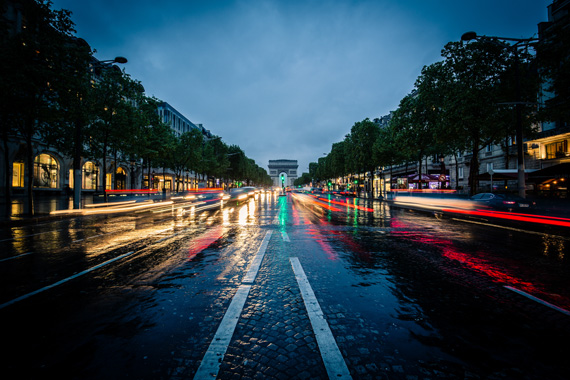
How Much Motion is Too Much Motion?
People often assume that more motion blur is better, but that isn’t always the case. Using a super-long exposure against a small amount of traffic won’t make the image look better—it’ll make it look desolate. (Which might be what you’re going for, of course, but if your intention is to show a bustling city, that won’t be the best way.)
Whatever shutter speed you choose will largely depend on the time of night and what other settings you’re working with. If you have a set aperture in mind, you’ll need to wait for the time of evening to match your desired ISO speed. Try waiting a while for the sky to change colors, and you’ll find your traffic blur will necessarily change, too. There’s no “right” or “wrong” exposure—just what you’re going for.
Great Places to Find Traffic
Finding the right location for heavy traffic can be tricky. You’ve got to know a city pretty well, or at least have an idea of where the congested thoroughfares will be. In general, though, I find these areas to be wonderful locations for photography in the evening:
- Intersections
- Bridges from above or below
- Highway overpasses
- Road corners
- Forks in the road
- Tight uphill switchbacks
- Stop signs
- Bus stops
The common theme here is movement—traffic in a straight line can maybe be interesting if you’ve got some variety in the shot (maybe skyscrapers or a city icon nearby), but failing that, you’re going to want to see some movement, leading lines and curves. That’s why bent roads and intersections work so well—you can create light lines out of conflict, movement and chaos.
Shutter Speed Comparisons
In the following three images watch the effect of shutter speed length on traffic moving across a bridge as it gets darker in the evening. All other settings constant (f/13, ISO 400) shooting in aperture priority.
0.6 second shutter speed:
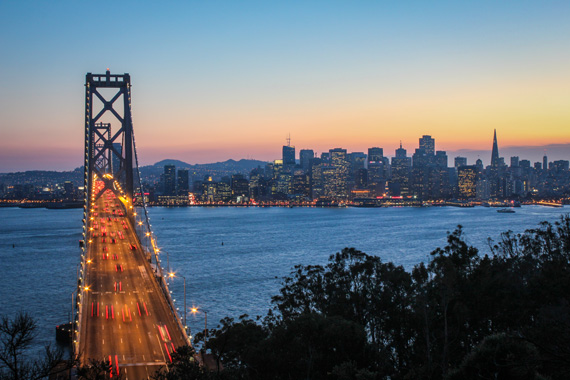
Shutter Speed Duration: 0.6 Seconds
3.2 second shutter speed:
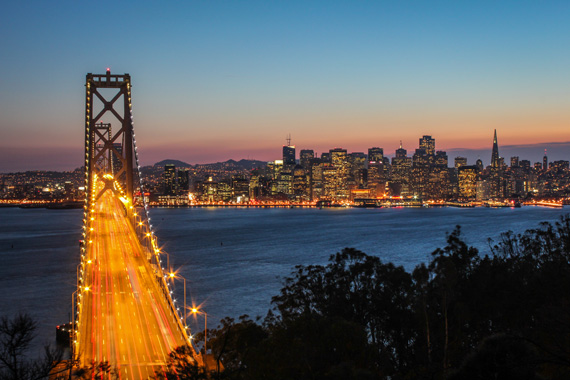
Shutter Speed Duration: 3.2 Seconds
10 second shutter speed:
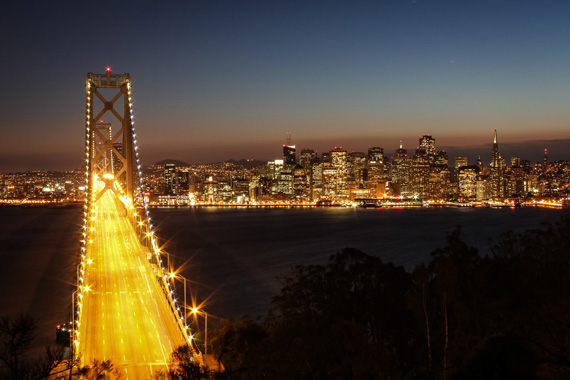
Shutter Speed Duration: 10 Seconds
None of these shutter speeds were “right” or “wrong”, it just depends what lighting conditions and lighting effects you like best. Get out there and try it for yourself!
Don’t Forget Pedestrian Traffic
When it comes to intersections, some bigger cities—New York, Tokyo, Toronto—will have four-way crosswalks, where pedestrians stream across in all directions, stopping cars on all four sides of the intersection.
These make especially great hectic shots, with cloudy masses surrounded by headlights and condo lights.
For Further Training:
This #1 bestseller is the most in-depth eBook on how to capture amazing photography anywhere. Over 250 pages of photography tips & tricks from industry insiders. Currently 83% off today for a Spring Sale if you want to check it out.
It is the product of over a DECADE of research as an insider in the photography industry, assembled to help you learn quickly and avoid the mistakes that I made along the way.
Deal ending soon: The Photography Tutorial eBook Spring Sale
Like This Article?
Don't Miss The Next One!
Join over 100,000 photographers of all experience levels who receive our free photography tips and articles to stay current:
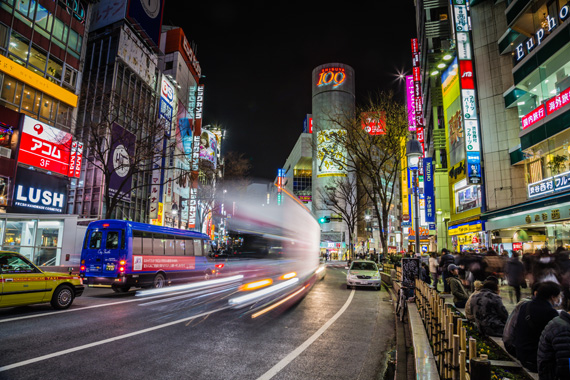

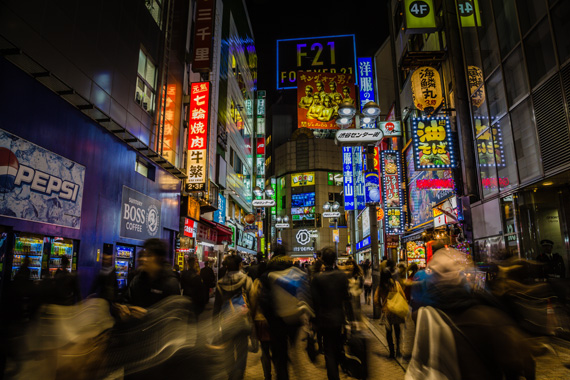
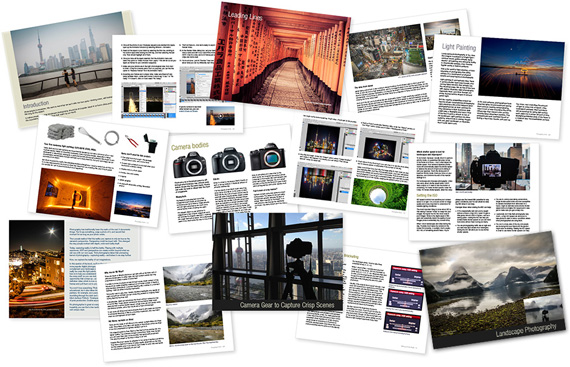






I found the tips on adjusting shutter speed for motion blur effects and selecting dynamic locations like intersections and bridges particularly helpful. The emphasis on considering pedestrian activity adds more interest to the shots. Overall, an excellent read for anyone looking to enhance their night city photography skills!
good picture
…and don’t forget to wrap up warm! Obviously depends where you’re shooting but what is a comfortable temperature when walking quickly becomes significantly less so when you’re stood still for minutes at a time!
Thank you for sharing the information and techniques for better photography!